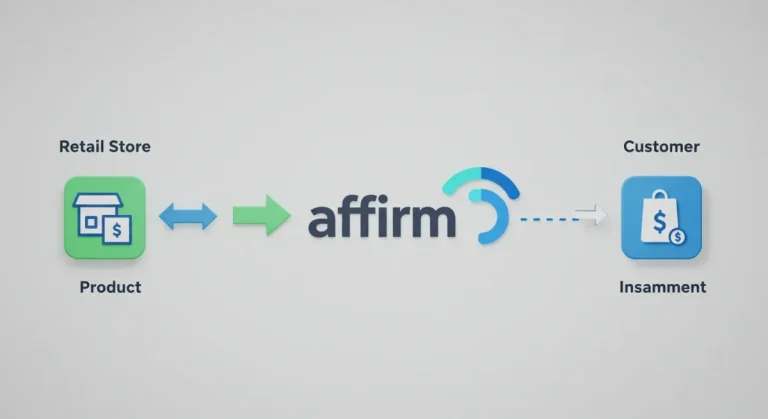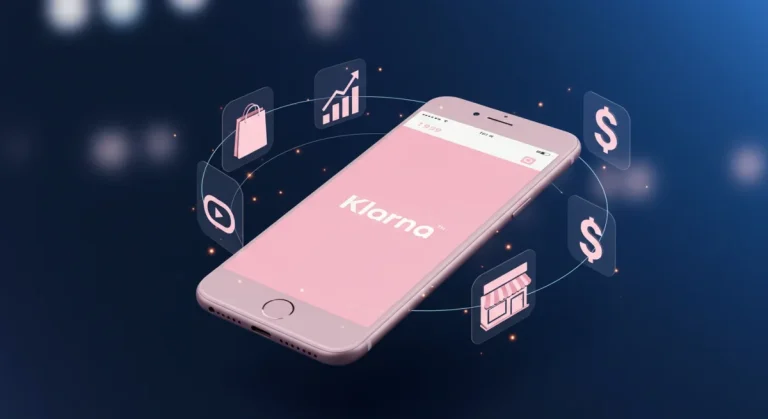The Business of ‘Buy Now, Pay Later’: How Afterpay Built a Financial Powerhouse
What if you could build a multi-billion-dollar financial empire by letting people buy things without ever charging them a penny of interest? It sounds like a business riddle, but it’s the reality that Afterpay pioneered. At checkouts across the internet and in physical stores, its logo has fundamentally changed how millions of people shop.
This simple proposition seems almost too good to be true, which begs the central question: if the consumer isn’t paying interest, how does Afterpay make money? The answer reveals a brilliant, disruptive business model that has redefined point-of-sale financing and built a financial powerhouse acquired by Block, Inc. for a staggering $29 billion. This isn’t just a story about a payment option; it’s a deep dive into the engine of the “Buy Now, Pay Later” (BNPL) revolution.
What is Afterpay and How Does It Work for Consumers?
Before dissecting its revenue streams, it’s crucial to understand the seamless experience that Afterpay offers its users. Unlike traditional credit cards or loans, Afterpay’s process is designed for simplicity and transparency.
The “Pay in 4” Installment Plan
At its core, Afterpay’s model is straightforward. When a shopper makes a purchase from a partner retailer, they can select Afterpay at checkout. The total cost is split into four equal, interest-free installments. The first payment is due at the time of purchase, and the remaining three are automatically charged to the user’s debit or credit card every two weeks until the purchase is paid off. There are no lengthy applications and typically no “hard” credit checks that would impact a user’s credit score.
The Appeal of Interest-Free Payments
The primary draw for consumers is the promise of 0% interest. For decades, financing purchases meant navigating credit card interest rates that could quickly spiral. Afterpay eliminated this pain point, offering a clear, predictable payment schedule. This approach has resonated particularly well with younger demographics who are often wary of traditional credit debt, providing a modern way to manage budgets for both everyday purchases and larger-ticket items.
The Core Revenue Streams: How Afterpay Generates Income
Afterpay’s genius lies in shifting the primary cost away from the consumer and onto another party in the transaction: the merchant. The company’s income is generated almost entirely from two main sources.
Merchant Fees: The Primary Engine of Afterpay’s Revenue
The vast majority of Afterpay’s revenue comes from merchant fees charged to its retail partners. For every transaction processed through its platform, Afterpay takes a percentage of the total sale price, plus a small fixed fee. This merchant commission typically ranges from 4% to 6%.
You might ask, why would retailers agree to give up a slice of their margin? The answer lies in powerful business incentives:
- Increased Conversion Rates: Offering Afterpay at checkout reduces “sticker shock” and cart abandonment, encouraging more customers to complete their purchases.
- Higher Average Order Value (AOV): By breaking a large payment into smaller chunks, customers are more likely to buy more expensive items or add more to their carts.
- Access to New Customers: Afterpay has a massive, loyal user base. Merchants gain access to this network of shoppers who specifically look for stores that offer BNPL options.
Essentially, merchants are not just paying for a payment service; they are paying for a powerful marketing and customer acquisition tool.
Late Fees: A Secondary (and Evolving) Source of Income
The second way Afterpay makes money is through late fees. If a customer misses a scheduled payment, a fee is charged. However, Afterpay has actively worked to minimize its reliance on this revenue stream to maintain its consumer-friendly image.
According to reports from financial regulators like the Consumer Financial Protection Bureau (CFPB), the BNPL industry is under scrutiny for its reliance on such fees. In response, Afterpay has capped its late fees and even introduced a feature that pauses a user’s account after a missed payment, preventing them from falling further into debt. The company states that its success is tied to customers spending responsibly, not to penalizing them.
The Afterpay Business Model Explained
Afterpay’s model is a carefully balanced ecosystem where the company acts as a crucial intermediary between consumers and retailers, with technology as its backbone.
A Symbiotic Relationship: How Retail Partners Benefit
The relationship with merchants is symbiotic. Afterpay drives measurable sales growth for its partners, and in return, it receives the fee that fuels its entire operation. This differs significantly from a company like PayPal, which built its business on facilitating simple digital payments, or Stripe, which provides a broader payment processing infrastructure for businesses. Afterpay’s model is deeply integrated into the merchant’s goal of increasing sales.
The Role of Technology, Data, and Risk Management
Afterpay uses sophisticated algorithms to assess risk in real-time. When a new user signs up, the initial spending limit is low. As they successfully complete payment cycles, their limit gradually increases. This proprietary risk management technology allows the company to approve transactions instantly without resorting to the traditional credit checks used by competitors like Affirm, which often focuses on longer-term, interest-bearing loans.
The Impact of the Acquisition by Block, Inc
In 2021, the acquisition of Afterpay by Block, Inc. (formerly Square) was a landmark event. It integrated Afterpay’s BNPL services into Block’s massive ecosystem of merchant POS systems and the consumer-facing Cash App. This strategic move allows for deeper integration at checkout for merchants already using Square’s technology and introduces millions of Cash App users to Afterpay, creating a powerful network effect.
Afterpay vs. The Competition: Klarna, Affirm, and Zip
Afterpay operates in a fiercely competitive market alongside other BNPL giants. While they all offer installment payments, their models have key differences:
- Klarna: Offers a wider variety of payment options, including a “Pay in 30 days” feature and longer-term financing that can include interest.
- Affirm: Primarily focuses on longer-term installment loans for larger purchases, with interest rates that vary based on the user’s credit.
- Zip (formerly Quadpay): Operates a model very similar to Afterpay’s “Pay in 4” but also offers a virtual card that can be used almost anywhere.
The Future of the Crowded BNPL Market
The future of the BNPL industry will likely be defined by increasing regulation, deeper integration into digital wallets, and a continued battle for merchant partnerships. As the market matures, the ability to innovate and provide tangible value to both shoppers and retailers will determine who leads the pack.
The Founders and History of Afterpay
Afterpay was co-founded in Sydney, Australia, in 2014 by Nick Molnar and Anthony Eisen. Molnar, a millennial with a background in online retail, saw an opportunity to cater to a new generation of shoppers who disliked traditional credit. Eisen brought the financial and risk management expertise. Their shared vision created a service that was built on fairness, transparency, and mutual benefit.
Key Takeaways
- Afterpay’s primary source of revenue is merchant fees, where it charges retailers a percentage of each transaction.
- Merchants pay these fees because Afterpay helps them increase sales, grow average order value, and attract new customers.
- A secondary, and decreasing, source of income is from capped late fees charged to consumers who miss a payment.
- The business model is built on an interest-free proposition for consumers, which differentiates it from traditional credit cards.
- The acquisition by Block, Inc. has integrated Afterpay into a vast seller and consumer ecosystem, positioning it for future growth.
Conclusion: The Future of Afterpay and the BNPL Industry
Afterpay did not invent installment payments, but it perfected a model for the modern digital economy. By aligning its own success with the success of its retail partners and building a brand around consumer-friendly, interest-free credit, it carved out a massive share of the market. Its business model demonstrates that profit doesn’t have to come directly from consumer interest charges.
Looking forward, as part of Block, Afterpay is poised to become even more embedded in our daily financial lives. The challenge will be to maintain its simple, transparent ethos while navigating a landscape of increasing competition and regulatory oversight. One thing is certain: the financial powerhouse built by Afterpay has forever changed the way we think about the business of buying now and paying later.
Frequently Asked Questions (FAQ)
How does Afterpay make money without charging interest?
Afterpay makes the vast majority of its money by charging a fee to its merchant partners (typically 4-6% of the purchase price) for each transaction. It also earns a smaller portion of revenue from fixed late fees if a consumer misses a payment.
What percentage does Afterpay take from merchants?
While the exact percentage can vary based on the merchant’s size and contract terms, Afterpay typically charges retailers a fee of around 4% to 6% of the transaction value, plus a small fixed fee (e.g., $0.30) per transaction.
Is using Afterpay bad for your credit score?
Typically, no. Afterpay does not perform “hard” credit inquiries when you sign up or make a purchase, so it does not affect your credit score. However, future changes in industry regulation or reporting practices could alter this.
What happens if you don’t pay Afterpay?
If you miss a payment, Afterpay will charge a capped late fee. More importantly, your account will be paused, and you will be unable to make any new purchases with Afterpay until you have paid your overdue balance.



